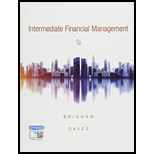
a)
Case summary:
Company L has chosen to procure an unused advertise information and citation framework for its R domestic office. The framework gets current showcase costs and other data from a few on-line information administrations, at that point either shows the data on a partition or shops it for afterward recovery by the company's agents. The framework moreover licenses clients to call up current cites on extremities within the campaign. The gear costs $1,000,000, and, in the event that it was obtained, company L might get a term credit for the total buy cost at a 10 percent intrigued rate. In spite of the fact that the gear contains a 6-year valuable time, it is classed as a special-need computer, so it comes under the MACRS three-year lesson. In the event that the framework was obtained, a four-year upkeep agreement can be achieved at a fetched of $20,000 per annum, owing at the starting of per year. The hardware would be marketed after for a long time, and the leading appraise of its leftover esteem at that time is $200,000. Be that as it may, since real-time show framework innovation is transforming quickly, the real surplus value is dubious. As an elective to the borrow-and-purchase arrangement, the gear producer educated $ L that Solidified Renting would be ready to type in a 4-year rule rent on the gear, counting support, for installments of $260,000 at the starting of each year. Company L’s negligible federal-plus-state charge rate is 40 %.
To determine: The
b)
To determine: The grounds for the discount rate person X practiced determining the present value.
Want to see the full answer?
Check out a sample textbook solution
Chapter 19 Solutions
Bundle: Intermediate Financial Management, 13th + MindTap Finance, 1 term (6 months) Printed Access Card
- During the year just ended, Anna Schultz's portfolio, which has a beta of 0.91, earned a return of 8.1%. The risk-free rate is currently 4.1%, and the return on the market portfolio during the year just ended was 9.4%. a. Calculate Treynor's measure for Anna's portfolio for the year just ended. b. Compare the performance of Anna's portfolio found in part a to that of Stacey Quant's portfolio, which has a Treynor's measure of 1.39%. Which portfolio performed better? Explain. c. Calculate Treynor's measure for the market portfolio for the year just ended. d. Use your findings in parts a and c to discuss the performance of Anna's portfolio relative to the market during the year just ended.arrow_forwardNeed answer.arrow_forwardSolve plz nowarrow_forward
 Intermediate Financial Management (MindTap Course...FinanceISBN:9781337395083Author:Eugene F. Brigham, Phillip R. DavesPublisher:Cengage LearningPrinciples of Accounting Volume 2AccountingISBN:9781947172609Author:OpenStaxPublisher:OpenStax College
Intermediate Financial Management (MindTap Course...FinanceISBN:9781337395083Author:Eugene F. Brigham, Phillip R. DavesPublisher:Cengage LearningPrinciples of Accounting Volume 2AccountingISBN:9781947172609Author:OpenStaxPublisher:OpenStax College



